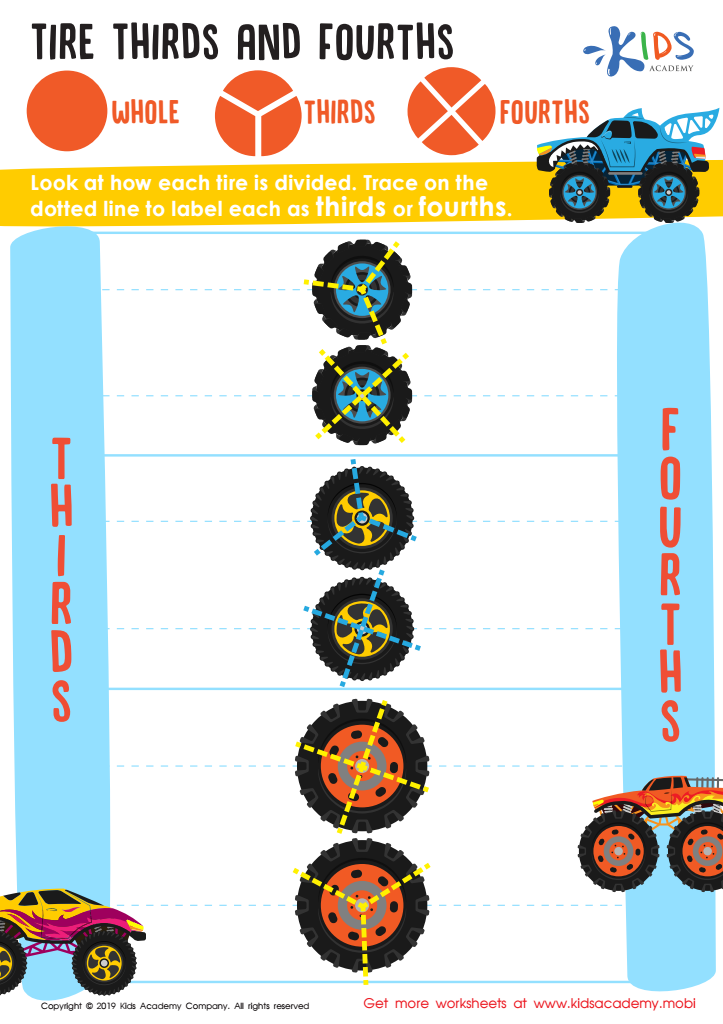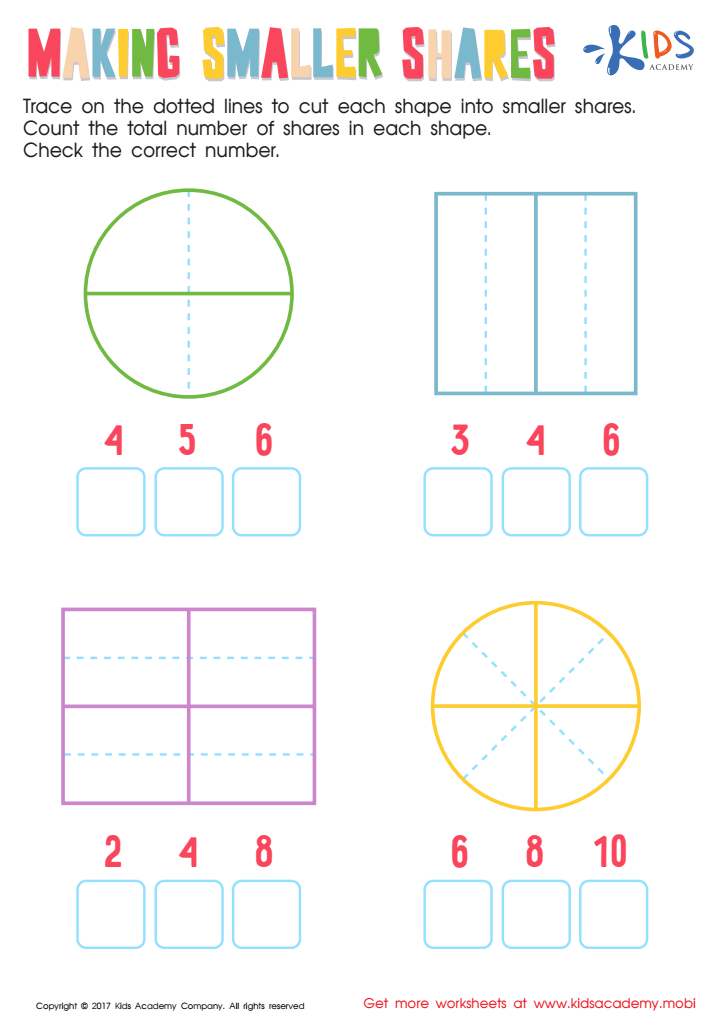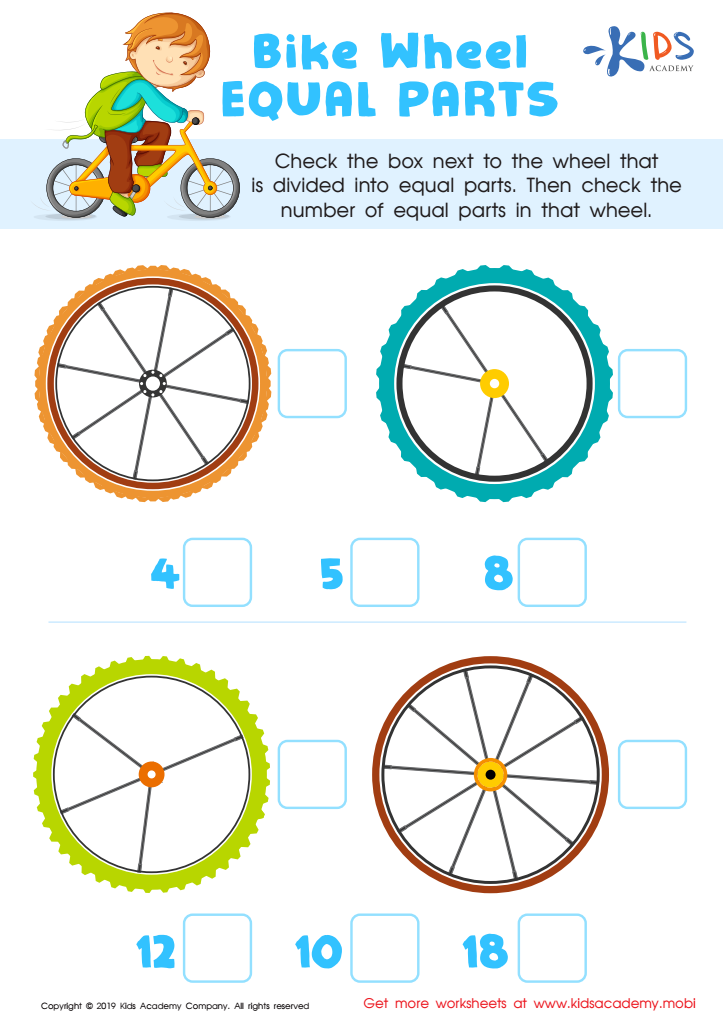Comparing Fractions Geometry Worksheets for Ages 6-7
5 filtered results
-
From - To
Discover our engaging "Comparing Fractions Geometry Worksheets" designed specifically for children aged 6-7. These educational resources help young learners grasp the concept of fractions through fun geometry-related activities. Each worksheet provides vibrant visuals and interactive elements that make mastering the comparison of fractions enjoyable. Students will practice identifying and comparing fractions using shapes, enhancing both their math skills and geometric understanding. Ideal for classroom use or at-home learning, our worksheets ensure an interactive experience that promotes critical thinking. Dive into a world of learning and watch as your child gains confidence in comparing fractions with our thoughtfully crafted materials!


Tire Thirds and Fourths Worksheet


Fractions: Shapes Worksheet


Comparing Shares Worksheet


Making Smaller Shares Worksheet


Bike Wheel Equal Parts Worksheet
Parents and teachers should prioritize comparing fractions and geometry for children ages 6-7 because these foundational skills are crucial for developing effective mathematic reasoning and problem-solving abilities. At this age, children are beginning to grasp the concepts of size, quantity, and relationships between different amounts. Comparing fractions introduces them to critical thinking as they evaluate and analyze the relationships between different quantities, reinforcing their understanding of numbers.
Geometry, on the other hand, enhances spatial reasoning, which is vital in many areas of learning and daily life. Understanding shapes, their properties, and how to compare them lays the groundwork for more advanced math and science concepts later on. Moreover, engaging with these concepts through hands-on activities and visual aids promotes active learning, making math enjoyable and relatable.
Additionally, mastering these concepts at this early age can boost children's confidence in their math skills, encouraging a positive attitude towards learning. When parents and teachers work together to integrate these skills into everyday experiences—like cooking, building, or playing games—children can see the relevance of math in their lives, fostering lifelong interest and success in mathematics. Ultimately, investing in these areas is essential to lay a strong foundation for future academic achievement.
 Assign to My Students
Assign to My Students































